Alright, we'll try this again...
Consider a union of the two, made up of areas defined by drawing a line from every vertex in ABCD (in black) to EFGH (in red):

The hard part here is coming up with all of the shapes defined by these lines (both the gray lines and the original lines coming from the ABCD and EFGH rectangles.)
Once you figure that out, create a linked list of these shapes, and assume every one of these shapes exists within the intersection.
Step 1. Translate & rotate everything so that ABCD has one vertex on 0,0 and its lines are parallel/perpendicular to the x and y axes.
Step 1A. Find the lowest y-value vertex in ABCD, and then subtract it from all other verts in the scene. Let's assume for the purposes of demonstration that that vertex is C. By subtracting C from every vertex in the scene, we will effectively move the origin (0,0) to C, making rotation around C easy.
for all shapes in linked list {
for all vertices in shape {
vertex -= C;
}
}
Step 1B. Rotate everything about the origin by an angle equal to the angle between the C->B vector and the x-axis, so that B lands on the x-axis:
// see http://en.wikipedia.org/wiki/Atan2
float rotRadians = atan2(B.x, B.y); // assuming ABCD vertices are labelled clockwise
for all shapes in linked list {
for all vertices in shape {
rot(thisVert, rotRadians);
}
}
// ...
// function declaration
void rot(theVertex, theta) {
tempX = theVertex.x;
tempY = theVertex.y;
theVertex.x = cos(theta) * tempX + sin(theta) * tempY;
theVertex.y = cos(theta) * tempY - sin(theta) * tempX;
}
If ABCD vertices were labelled clockwise, the ABCD vertices should now look like this:
A = ABCDx , ABCDy
B = ABCDx , 0
C = 0 , 0
D = 0 , ABCDy
(If they were not labeled clockwise, then the "lies within" check in Step 2 won't work, so make sure the vert used in the atan2(...) call is the vertex counterclockwise from the lowest vertex.)
Step 2. Now we can easily analyze whether or not a shape lies within the ABCD rectangle, e.g. if (thisVert.x >= 0 && thisVert.y >= 0 && thisVert.x <= ABCDx && thisVert.y <= ABCDy). Traverse the linked list of shapes, and check to make sure each vertex of each shape lies within ABCD. If one vertex of a shape does not lie within ABCD, then that shape is not part of the ABCD/EFGH intersection. Mark it as not part of the intersection and skip to the next shape.
Step 3. Undo the rotation from Step 1B, then undo the translation from Step 1A.
Step 4. Repeat Steps 1-3 with EFGH instead of ABCD, and you will have your intersection set.
If the only intersection between the two sets is a line, then the above will return nothing as an intersection. If the intersection == NULL, then check for lines that intersect.
If the intersection is still NULL, then check for intersecting points.
